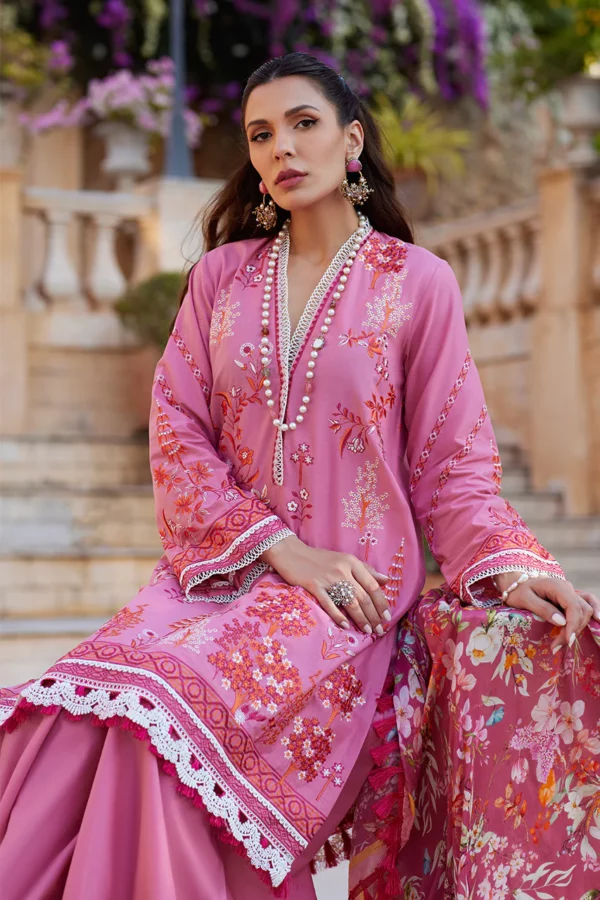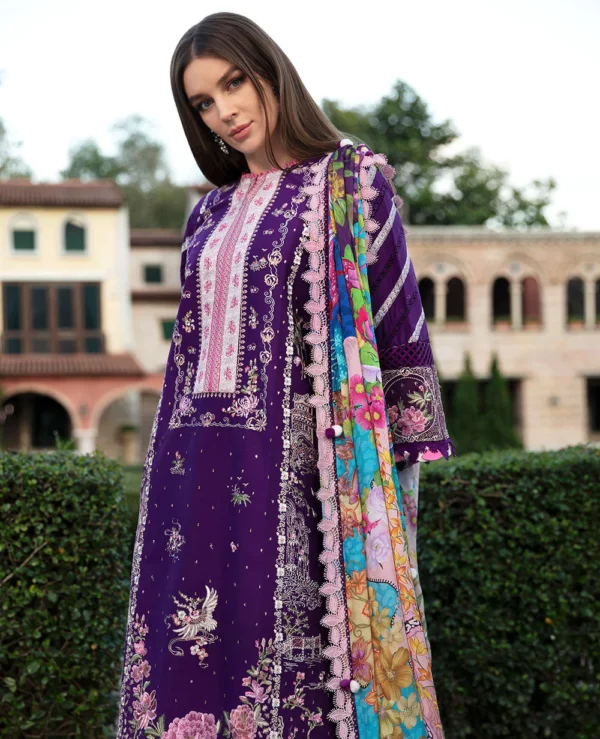Fashion News & Trends
What Is Merchandising? A Comprehensive Guide
What Is Merchandising? A Comprehensive Guide
Merchandising is a critical aspect of the retail industry that involves the buying, planning, and selling of products to customers. In this comprehensive guide, we will explore what merchandising is, the different types of merchandising, and its importance to retailers.
What is Merchandising?
Merchandising is the process of purchasing, displaying, and selling products to customers. It is an essential aspect of the retail industry, and it involves a wide range of activities such as planning, buying, and managing inventory. The primary goal of merchandising is to ensure that the right products are available to customers at the right time, in the right place, and at the right price.
The Role of Merchandising in Retail
Merchandising plays a crucial role in the success of any retail business. The process of merchandising helps retailers to understand their customers’ needs and preferences and to ensure that they meet those needs by offering the right products at the right time. By understanding their customers’ preferences, retailers can create a shopping experience that is both satisfying and profitable.
Types of Merchandising
There are several types of merchandising, including visual merchandising, product merchandising, and assortment merchandising.
Visual Merchandising
Visual merchandising involves the use of visual elements such as displays, signage, and lighting to enhance the shopping experience. The primary goal of visual merchandising is to attract customers and encourage them to make purchases. Effective visual merchandising can help retailers create a unique brand image and build customer loyalty.
Product Merchandising
Product merchandising involves the selection, pricing, and placement of products in a store. The primary goal of product merchandising is to ensure that the right products are available to customers at the right time and at the right price. Effective product merchandising can help retailers increase sales, reduce inventory costs, and improve customer satisfaction.
Assortment Merchandising
Assortment merchandising involves the selection and grouping of products to create a specific product mix. The primary goal of assortment merchandising is to ensure that the right products are available to customers based on their preferences and needs. Effective assortment merchandising can help retailers increase sales and profits while reducing inventory costs.
The Importance of Merchandising to Retailers
Merchandising is essential to the success of any retail business. Effective merchandising can help retailers improve their sales and profitability by attracting customers, creating a unique shopping experience, and increasing customer loyalty. By understanding their customers’ needs and preferences, retailers can create a product mix that meets those needs, which can lead to increased sales and profits.
The Merchandising Process
The merchandising process involves several steps, including planning, buying, managing inventory, and analyzing sales data.
Planning
The planning stage involves understanding customers’ needs and preferences, researching trends, and creating a merchandising plan. This plan outlines the product mix, pricing, and promotions that will be used to attract customers and meet their needs.
Buying
The buying stage involves selecting and purchasing products from suppliers. This involves negotiating prices, terms, and delivery schedules to ensure that the products are available to customers when they are needed.
Managing Inventory
Managing inventory involves ensuring that the right products are available to customers at the right time. This involves monitoring inventory levels, forecasting demand, and making sure that the products are available when customers need them.
Analyzing Sales Data
Analyzing sales data involves using data analytics to understand customer behavior, track sales trends, and identify opportunities for growth. This helps retailers make informed decisions about merchandising and can lead to increased sales and profitability.
Merchandising is a crucial aspect of the retail industry that involves the buying, planning, and selling of products to customers. By understanding the importance of merchandising, retailers can improve their sales and profitability by attracting customers, creating a unique shopping experience, and increasing customer loyalty.
Effective merchandising involves a range of activities, including planning, buying, managing inventory, and analyzing sales data. The process of planning involves researching trends and understanding customer needs and preferences to create a merchandising plan that outlines the product mix, pricing, and promotions.
Buying products from suppliers involves negotiating prices, terms, and delivery schedules to ensure that products are available to customers when they are needed. Effective inventory management involves monitoring inventory levels, forecasting demand, and ensuring that products are available to customers when they need them.
Analyzing sales data helps retailers understand customer behavior, track sales trends, and identify opportunities for growth. By using data analytics to make informed decisions about merchandising, retailers can increase sales and profitability.
In conclusion, merchandising is an essential aspect of the retail industry that involves a range of activities aimed at ensuring that the right products are available to customers at the right time, in the right place, and at the right price. Effective merchandising can help retailers create a unique shopping experience, increase customer loyalty, and improve sales and profitability. By understanding the importance of merchandising and implementing effective merchandising strategies, retailers can succeed in a competitive retail environment.
FAQs
- What is visual merchandising, and why is it important? Visual merchandising involves the use of visual elements such as displays, signage, and lighting to enhance the shopping experience. Effective visual merchandising can help retailers create a unique brand image, attract customers, and encourage them to make purchases.
- What is product merchandising, and how does it help retailers? Product merchandising involves the selection, pricing, and placement of products in a store. Effective product merchandising can help retailers increase sales, reduce inventory costs, and improve customer satisfaction.
- What is assortment merchandising, and how does it benefit retailers? Assortment merchandising involves the selection and grouping of products to create a specific product mix. Effective assortment merchandising can help retailers increase sales and profits while reducing inventory costs by ensuring that the right products are available to customers based on their preferences and needs.
- Why is inventory management important in merchandising? Effective inventory management is critical in merchandising because it involves ensuring that the right products are available to customers when they need them. By monitoring inventory levels, forecasting demand, and managing inventory effectively, retailers can ensure that they have the products they need to meet customer demand while minimizing inventory costs.
- How can retailers use data analytics to improve merchandising? By analyzing sales data, retailers can understand customer behavior, track sales trends, and identify opportunities for growth. This helps retailers make informed decisions about merchandising, which can lead to increased sales and profitability.
Effective merchandising is crucial to the success of any retail business. By understanding their customers’ needs and preferences, retailers can create a product mix that meets those needs and can lead to increased sales and profits. Retailers must use effective merchandising strategies to create a unique shopping experience, build customer loyalty, and stay competitive in a crowded retail environment.
Visual merchandising involves the use of visual elements such as displays, signage, and lighting to enhance the shopping experience. Effective visual merchandising can help retailers create a unique brand image, attract customers, and encourage them to make purchases.
Product merchandising involves the selection, pricing, and placement of products in a store. Effective product merchandising can help retailers increase sales, reduce inventory costs, and improve customer satisfaction. By understanding customer needs and preferences, retailers can create a product mix that meets those needs and encourages customers to make purchases.
Assortment merchandising involves the selection and grouping of products to create a specific product mix. Effective assortment merchandising can help retailers increase sales and profits while reducing inventory costs by ensuring that the right products are available to customers based on their preferences and needs.
Effective inventory management is critical in merchandising because it involves ensuring that the right products are available to customers when they need them. By monitoring inventory levels, forecasting demand, and managing inventory effectively, retailers can ensure that they have the products they need to meet customer demand while minimizing inventory costs.
By analyzing sales data, retailers can understand customer behavior, track sales trends, and identify opportunities for growth. This helps retailers make informed decisions about merchandising, which can lead to increased sales and profitability.
In conclusion, effective merchandising is critical to the success of any retail business. Retailers must use effective merchandising strategies to create a unique shopping experience, build customer loyalty, and stay competitive in a crowded retail environment. By understanding customer needs and preferences, selecting the right products, and managing inventory effectively, retailers can increase sales and profits while reducing costs. By using data analytics to make informed decisions about merchandising, retailers can succeed in a competitive retail environment.



















































